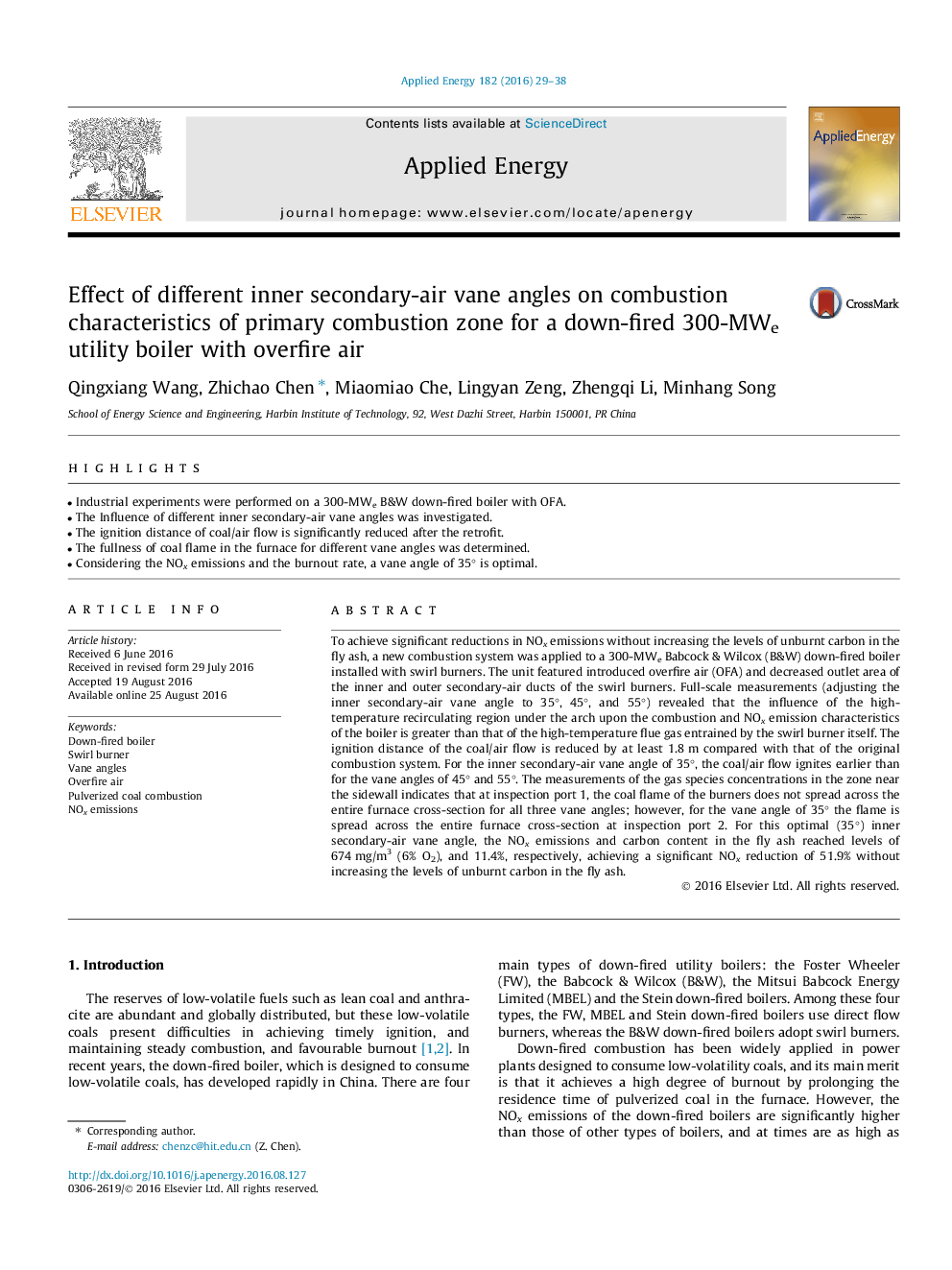| کد مقاله | کد نشریه | سال انتشار | مقاله انگلیسی | نسخه تمام متن |
|---|---|---|---|---|
| 6478816 | 1428106 | 2016 | 10 صفحه PDF | دانلود رایگان |

- Industrial experiments were performed on a 300-MWe B&W down-fired boiler with OFA.
- The Influence of different inner secondary-air vane angles was investigated.
- The ignition distance of coal/air flow is significantly reduced after the retrofit.
- The fullness of coal flame in the furnace for different vane angles was determined.
- Considering the NOx emissions and the burnout rate, a vane angle of 35° is optimal.
To achieve significant reductions in NOx emissions without increasing the levels of unburnt carbon in the fly ash, a new combustion system was applied to a 300-MWe Babcock & Wilcox (B&W) down-fired boiler installed with swirl burners. The unit featured introduced overfire air (OFA) and decreased outlet area of the inner and outer secondary-air ducts of the swirl burners. Full-scale measurements (adjusting the inner secondary-air vane angle to 35°, 45°, and 55°) revealed that the influence of the high-temperature recirculating region under the arch upon the combustion and NOx emission characteristics of the boiler is greater than that of the high-temperature flue gas entrained by the swirl burner itself. The ignition distance of the coal/air flow is reduced by at least 1.8 m compared with that of the original combustion system. For the inner secondary-air vane angle of 35°, the coal/air flow ignites earlier than for the vane angles of 45° and 55°. The measurements of the gas species concentrations in the zone near the sidewall indicates that at inspection port 1, the coal flame of the burners does not spread across the entire furnace cross-section for all three vane angles; however, for the vane angle of 35° the flame is spread across the entire furnace cross-section at inspection port 2. For this optimal (35°) inner secondary-air vane angle, the NOx emissions and carbon content in the fly ash reached levels of 674 mg/m3 (6% O2), and 11.4%, respectively, achieving a significant NOx reduction of 51.9% without increasing the levels of unburnt carbon in the fly ash.
Journal: Applied Energy - Volume 182, 15 November 2016, Pages 29-38